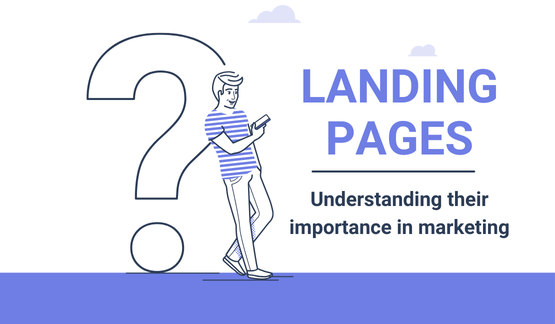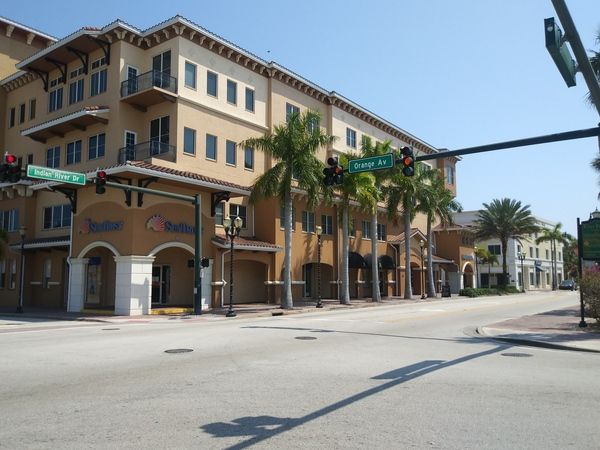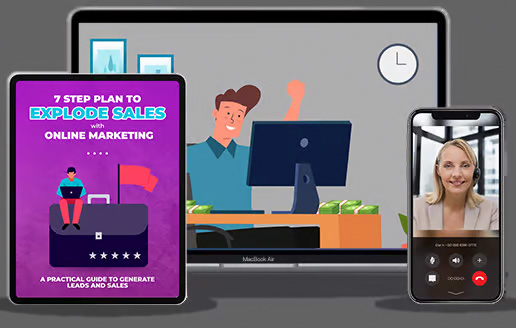Getting traffic to your website is hard work—and it’s rarely free. Whether you’re running ads, investing in SEO, or publishing engaging content, there’s always a cost involved. And yet, many businesses struggle to see a return on this investment.
Why? Because traffic alone doesn’t generate revenue. That’s where landing pages come in.
Landing pages bridge the gap between traffic (often expensive to obtain) and revenue (the ultimate goal). These purpose-built pages guide visitors toward a specific action, such as signing up for a webinar, downloading a resource, or making a purchase.
In this post, we’ll dive into what landing pages are, why they matter, and how they can unlock new growth for your business.
What Is a Landing Page?
A landing page is a purpose-built webpage designed with a single goal: to drive visitors toward a specific action. Unlike other pages on your website, which may serve multiple purposes (like informing, navigating, or engaging), a landing page is laser-focused on conversion. Every element on the page—its headline, copy, visuals, and call to action (CTA)—works together to achieve one clear objective.
Landing pages are often tied to a specific trigger, like an ad campaign, email link, or social media post. Because of this, they’re tailored to match the intent and expectations of the visitor. For example, if someone clicks on a Google ad offering a free eBook about increasing conversions, the landing page they arrive at should deliver on that promise and guide them to download the eBook—nothing more, nothing less.
Types of Landing Pages and Their Actions
Landing pages come in many forms, each designed to prompt a specific action. Here are a few common types and the actions they drive:
- Lead Generation Pages (Squeeze Pages):
- Goal: Collect visitor information, such as name and email address, in exchange for something of value (e.g., a free guide, webinar registration, or discount code).
- Example: A landing page offering a “Free Guide to Boosting Your ROI” with a simple form to download it.
- Click-Through Pages:
- Goal: Provide additional information to persuade the visitor to move further down the funnel, often leading to a purchase or subscription.
- Example: A page highlighting the features of a product with a “Buy Now” button leading to the checkout.
- Sales Pages:
- Goal: Directly convert the visitor into a paying customer by selling a product or service.
- Example: A page with persuasive copy, visuals, and testimonials encouraging users to buy a specific course or software.
- Event Registration Pages:
- Goal: Get visitors to sign up for an event, such as a webinar, workshop, or conference.
- Example: A page detailing the event benefits and agenda with a simple “Register Now” form.
- Free Trial or Demo Pages:
- Goal: Encourage visitors to try a product or service for free to reduce friction in the decision-making process.
- Example: A software company offering a 7-day free trial with a prominent “Start Free Trial” button.
- Download Pages:
- Goal: Deliver digital resources like whitepapers, templates, or eBooks.
- Example: A page that says, “Your Free Template Awaits!” with a download button.
The Role of the Trigger
What makes landing pages so effective is their alignment with the trigger that brings a visitor to the page. The trigger—whether it’s a paid ad, an email, or a social media post—sets the visitor’s expectations and intent.
For example:
- Ad Campaigns: A Google Ad promoting “Free Marketing Tips” should lead to a landing page where visitors can instantly access those tips by providing their email address.
- Email Campaigns: An email inviting recipients to register for a webinar should drive them to a landing page with event details and a registration form.
- Social Media Posts: A Facebook post about a 20% discount should link to a landing page where visitors can claim that discount.
By aligning the content and design of the landing page with the trigger, you ensure that the visitor feels they’re in the right place and knows exactly what to do next. This clarity and relevance are why landing pages consistently outperform general website pages in driving conversions.
How Are Landing Pages Different From Other Website Pages?
It’s helpful to contrast landing pages with other types of pages on your website:
- Homepages:
- The homepage acts as the central hub of your website, offering navigation to multiple sections like products, services, or blogs.
- While homepages are often linked in ads or organic search, they lack the singular focus of a landing page, making them less effective for driving a specific action.
- Content Pages (Blogs, Resources, etc.):
- Content pages engage visitors by providing valuable information and insights.
- Their primary goal is to build trust and awareness, often guiding readers to a landing page where they can take the next step.
- Utility Pages (About Us, FAQ, Contact Us):
- These pages support the overall user experience by offering information or helping visitors navigate the site.
- While essential, they’re not designed for conversion and rarely tie directly to marketing campaigns.
A landing page, on the other hand, is intentionally free of distractions like navigation menus or unrelated links. Its purpose isn’t to inform or engage broadly—it’s to move the visitor forward in the customer journey by taking a specific, measurable action.
Why Are Landing Pages Important?
Landing pages are the linchpin of any successful digital marketing strategy because they directly impact your ability to turn traffic into revenue. Without them, even the most carefully planned campaigns can fall flat, leaving you with costly traffic and no return on investment.
1. Traffic Is Expensive
Whether you’re investing in paid ads, crafting email sequences, or creating high-quality SEO content, driving visitors to your website comes at a cost. Each click, share, or view represents time, money, and effort spent to capture attention. But here’s the problem: if your website can’t convert that hard-earned traffic into leads or customers, you’re essentially leaving money on the table.
Landing pages solve this problem by providing a focused, optimized path for visitors to take action. By aligning the page with the intent of the visitor—whether they clicked on an ad, opened an email, or followed a social media link—you ensure that their next step is clear and compelling.
2. Competitive Advantage
In industries where competition for clicks is fierce, landing pages can make or break your ability to compete. Consider this example:
Imagine you’re a personal injury attorney in a major market. The top-ranking firms in your area are spending over $10,000 per month on SEO and content marketing. If their landing pages convert traffic at 10%, they can afford to keep investing in ads and content, knowing their ROI justifies the expense.
Now, if your website’s conversion rate lags behind at 2.35% (the average for most industries), your competitors have a massive edge. They can bid more for ads, dominate search rankings, and lock you out of the market. Optimized landing pages level the playing field, allowing you to compete effectively and scale your marketing efforts.
3. The Key to Scaling Your Business
Landing pages don’t just convert traffic—they enable you to scale. Here’s why:
When every visitor has a clear path toward becoming a customer, it justifies the cost of getting them there in the first place. This confidence allows you to invest more in driving traffic, knowing that your landing pages will deliver measurable results.
For businesses without high-performing landing pages, even modest traffic can feel like a wasted opportunity. By contrast, companies that optimize their landing pages see traffic as a growth lever—a resource they can use to expand their reach and revenue.
4. Advancing the Customer Value Journey
Every action a visitor takes on a landing page moves them further along the customer value journey. For example:
- Signing up for a webinar transitions a visitor from awareness to engagement.
- Downloading a free resource brings them closer to becoming a lead.
- Completing a purchase elevates them from a prospect to a paying customer.
Each step deepens the relationship between the visitor and your brand, turning one-time interactions into long-term value. Landing pages are purpose-built to facilitate these critical moments of progression.
The Anatomy of a High-Converting Landing Page
Not all landing pages are created equal. The difference between a mediocre landing page and a high-performing one can be the difference between wasting traffic and turning it into consistent revenue. Here’s a breakdown of the key elements every effective landing page needs:
1. Compelling Headline
Your headline is the first thing visitors see. It needs to grab attention, communicate value, and make it immediately clear that the visitor is in the right place. A great headline aligns with the trigger that brought them to the page, reinforcing their decision to click.
- Example: If an ad promotes “5 Tips to Boost Your Marketing ROI,” the landing page headline might read, “Get Your Free Guide: 5 Proven Ways to Increase ROI Today.”
2. Tailored Messaging
The copy on your landing page should speak directly to the visitor’s needs, concerns, and desires. Avoid generic language. Instead, craft messaging that reflects their intent and provides a clear benefit for taking action.
- Tip: Use customer-focused language that answers the question, “What’s in it for me?”
3. Clear and Singular Call to Action (CTA)
A landing page should have one and only one call to action. Whether it’s signing up, downloading, or purchasing, the CTA should be clear, compelling, and impossible to miss.
- Best Practices:
- Use action-oriented language, like “Start Your Free Trial” or “Get My Guide.”
- Make the CTA visually prominent with contrasting colors and ample whitespace.
4. Engaging Visuals
Images, videos, and other visual elements can reinforce your message and make your page more appealing. Use visuals strategically to build trust, demonstrate benefits, or showcase the product or service.
- Example: A short video explaining how your product solves a common problem can significantly boost engagement.
5. Trust Signals
Visitors are more likely to convert if they feel confident in your brand. Trust signals like testimonials, case studies, certifications, or secure payment badges help reduce hesitation and build credibility.
- Tip: Place trust signals near the CTA to reassure visitors at the moment of decision.
6. Distraction-Free Design
Unlike other web pages, a landing page should eliminate distractions. Remove navigation menus, unnecessary links, and competing CTAs to keep the visitor focused on the primary goal.
- Example: A minimalist design with a single path forward creates a frictionless experience that drives conversions.
7. Fast Loading Speed
Page speed isn’t just a technical consideration—it’s a conversion factor. A slow-loading page can frustrate visitors and cause them to abandon the site before it even loads.
- Best Practice: Aim for a load time of under 3 seconds to maximize engagement and conversions.
8. Mobile Optimization
With the majority of web traffic now coming from mobile devices, your landing page must look and function flawlessly on smaller screens.
- Tip: Test your page on multiple devices and screen sizes to ensure a seamless experience.
9. Alignment With the Trigger
Finally, ensure that your landing page aligns perfectly with the trigger that brought visitors there. This means matching the tone, content, and offer of the ad, email, or social media post that directed them to the page.
- Example: If an ad promises a “Free Consultation,” the landing page should deliver exactly that, without introducing unrelated offers or additional steps.
Why These Elements Matter
When these elements come together, they create a seamless experience that minimizes friction and maximizes the likelihood of conversion. A high-converting landing page isn’t just about looking good—it’s about guiding visitors to take the next step in their journey with confidence and clarity.
Conclusion: Why Landing Pages Are Essential for Your Business
Landing pages are more than just another webpage—they are the key to turning traffic into measurable business outcomes. They bridge the gap between traffic, often expensive to obtain, and revenue, the ultimate goal. By aligning perfectly with the triggers that bring visitors to your site, landing pages guide them toward specific actions that move them further along the customer journey.
A well-optimized landing page doesn’t just help you convert visitors; it enables you to scale your business by making traffic acquisition worthwhile. It allows you to compete in crowded markets, justifies your investment in ads and SEO, and transforms your website into a powerful conversion machine.
Creating effective landing pages requires attention to detail, from crafting a compelling call to action to ensuring distraction-free design. Want to know the essential elements of a high-converting landing page and the mistakes to avoid? Check out our in-depth guide, The Anatomy of a High-Converting Landing Page, and Common Mistakes to Avoid.
With the right strategy and execution, landing pages can unlock new growth opportunities for your business. Start building your own today, or reach out to our team at Blue Creek Digital for expert guidance.



